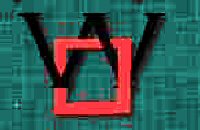 Analyses of all verses
Analyses of all verses
|
 Web Site
Web Site |
 All
Sephirots All
Sephirots |
Nostradamus on how Chernobyl Nuclear accident affects humankind
© Allan Webber April 2020, Jul 2020 .
If Nostradamus could see the future then he faced a massive logistical challenge; he had to select material from all the incidents, understandings and developments that fill the times beyond his death. He had little space in 942 four line verses to cover so vast a span. So if anything is in them it has to be of fundamental importance to our race. And in making any choice his biases would be shown.
We can surely know that his motivation was local. Firstly the 16thC was paramount to him but he knew he was mortal and such foresight had limited use and was dangerous. Hence there must have been a code that was relevant to his intimates by which he set out his visions. And this is true irrespective of whether he was a charlatan or a person capable of seeing the future.
The ability to see into the future is a difficult hurdle but his works were written, meaning he had motivation. The prophecies exist and people including patrons paid to read them so there is method in Nostradamus' technique that at the very minimum applies to the structures in his poetry. To even begin to accept that he saw the future we have to judge a far less challenging set of facts and ideas than the means by which that is possible. Yet the arguments for his presentation of localised visions are relevant to the harder art.
So what motivated him? How did he communicate his visions in the hotbed of his shambolic verse?
| Frequency of
complex Nuclear & coding terms (as anagrams) in
Nostradamus' Prophecies C5 Q40 1: uranologist, quartered, expositio, 2: incinerator, organelles, toluic, meteorites, equate, 3: frontpiece / perfection, Poitiers, tiresome, shield,layers, 4: Valoix, pierce, Gauloist, container, realists, notate, eerie, 6: Royals C10 Q65 1: computerisation, proactiniums, actiniums, overheats, supercanopy, Nostredamus, encodements, agennetos, denouncements, flatterers, tsunamic, 2: tonnages, Sefiras, uneasy, status, 3: frontpiece, tremendous, perfection, undermost, 4: apparels, 5: denotes, guest, 6: connate 8: agennos, unsorted, C5 Q93 1: contrasted, globules, scattered, Israeli, unable, 2: mistreated, Belorussian, confides, mercature, equalise, unfit, airline, started. 3: trebles, galleons, gold, 4: dominate, Seleurian, ground, 5: Romanised, airlines, unravel, numerate, sillier, 6: gasolines, fruit, C4 Q45 1: halflife, programs-profiles, misgotten, forlornity, supergene, evenness, 2: revenants, affiche, grey, energy, chantress, 3: Belarusia, monasteries, gnomist, eloping, 4: eparchs, chanters, got, 5: biogens, genomist, preaches, 6: began, 7:atomise(-/r) C2 Q30 1: hafniums, upholds, should, Belarux, 3: inundative, infernal, plunders, uuarn uninvited, ushered 3: humanise(s/d), alibi, herds, 4: deprivant, 5: refrains, shroud, rabble, Lunar, 6: famines, infers, , C1 Q49 1: proletarian, perfectness, supergiant, vulture, 2: Belorusian, 3: palaver, because, 4: nuclaire, enforces, smell, 5: atropine, predation, parental / paternal, coinage, 8: taunt, C10 Q21 1: predominant, notableness, fertileness, anointment, failurez, fatigues, 2: friendliest, ordainment, Dnipro, atomic, measures, disrupt, boneless, prisoners. 3: nominate, segmental, dispute, commit, stupid, 4: depression repealed, measurer, refines, 5: dominant, purely, 6: streamline, laments, preordain, tenants, murder, failure, 7: despite, ovulant, bag, 8: presealed, C6 Q37 1: anti-cancerous, insurance, unreaonably, accent, co-insurance, accounts 2: atomic, cancerous, accuser, underly, 3: innocent, connect, acetonic, underlay, 4: uranyl, root, accuse, 6: charters, bury, rurals C5 Q35 1: atmospherical, logicalness, adenoviruses, grounduuater, unignorable, 2: Belarusian, boundaries, localise, aphelic, burial, 3: disenslaves, 4:Chaldee(- /n), mascot, require, phial, 5: vassel / slaves, endured, adversion, reception, 6: atoms, variedness, molest, ouuned, 7: classes, C9 Q48 1: accriminate, unrealistic, nuclearist, centralizes, alchemye, 2: insurrectional, immaterial, coenacted, temperate, 3: primal, 4: American, pellet, insulate, 5:interlaces, articles, lesson, 6: uranolites, ethic, alternates, vented, |
If he could see the future his focal points would have been narrowed by both distance and time. The further into the future he saw the more filtering would be needed. To be of interest his foreseen events would have to increase in importance to the world and the human race the further they were removed from 16thC southern France.
And contradictions for a 16thC man, living in southern France, mount the further we go into the future since his reality is lost in devices, knowledge, shapes and forms that have no earlier reference point.
So why did he write his Prophecies if the far distant future held no benefit for him and no chance of dialogue or enhancement could come of it?
We do know no one of any era before the 21stC could fully read his prophecies because of their structure. Yet the 21stC is a date hinted at by Nostradamus for the successful decoding of his work. So what could it hold that justifies his writing of it for such a far distant reader base
|
C3 Q94 Who was the ornament of his time: Then suddenly great light will he give, He who for this century renders them very satisfied. De cinq cens ans plus compte l'on tiendra Celuy qu'eſtoit l'aornement de son temps Puis a vn coup grande clarte donra Que par ce ſiecle les rendra treſcontens. |
The most prominent story lines can be readily identified as involving a great flood, fire from the sky, war and disease. But the central theme involves challenges to the foundations of religion.
Even amongst the jumble of Nostradamus' original publications there are visible clues. One involves astronomy while another involves the nature of his poetry and a third involves controversies surrounding the nature of Christ and his return. These topics dominated his era so there is a reason why, if he foresaw that future men could shape those legends and give them meaning, it would have attracted his attention.
In this series of Sephirots I show that nuclear technology events do exist in his writings in a form that is difficult to dismiss as a product of chance alone. It is concealed in a very visible way like a camouflaged soldier who is usually only seen when the tricks are known. In the case of Nostradamus' verses the tricks relate to anagrams (letter re-arrangements) formed in a language different from French.
I believe the ideological battles that arise out of religious differences form the skeleton around which he wraps modernity. He does so in order to give it context and placement in time and space. But if this is so then Nostradamus' doesn't necessarily have to see these battles as good or evil but a resolution of the conflicts he experienced in his life. His truth lies in the story not in its outcome or judgment of its merit.
The modernity cloak provides a very high hurdle to jump for a 16thC prophet but its language if successfully used would surely show his capability as a visionary.
In this paper I provide the evidence that can be seen in a cluster of ten verses.
They hold information about the Chernobyl disaster near the Belarus / Ukraine border in 1986 that is hard to explain as a product of chance. And Nostradamus' apparent understanding of the metallurgy of radioactive elements is quite remarkable extending into a valid picture of the aftermath of two events, the Chernobyl disaster and climate change induced floods and fires. In addition there is a consistency between the stories produced from the visible text and those constructed from the anagrams. They form several such streams extending across religious motivation, countries and leaders as well as modern technology.
In constructing this Sephirot, ciphers based on the nuclear industry provide the cornerstone together with the name of a country, Belarus. Using this as the base brings together terms that again provide unexpected structure. As with each sephirot presented the same mechanistic computerised selection mode is used. Some of the resultant terms are Belarus (4), Belorussian (2), Dnipro (2), globule (1), inundative (2), parable (6), computerisation (1), perfection (3) protoactiniums (1) proactiniums (1), actiniums (1), hafniums (1), energy (2), half-life (1), boundaries (2)and localise (2).
These are clearly modern and equally clearly related to terms we use in discussing nuclear topics.
Verse C5 Q35 holds a range of
the aforementioned modern terms and it also additional single occurrence
anagrams. These include atmospherical, logicalness,
unignorable and groundwater.
These terms complement the picture
that has applied to the region around Chernobyl since the time of its nuclear
disaster.
This cluster also carries several crucial coding clues with links to
ongoing debate about Jesus' immortal status. They include Nostredamus (1),
encodements (1), agennetos (1),
agennos (8), tremendous (3),
status (2),
denouncements (1).
Together these constructions offer insight into the motivation for the writing and the clarity or otherwise of the visions. They also identify time and place and potentially show the way Nostradamus built them into his writings.
The Sephirot below provides the framework to more easily see the shared sense of meaning within its ten component verses. That sense implies he foresaw and recorded the impact of the Chernobyl disaster as a part of the nuclear hazards that come with dramatically raised sea levels.
The material included in this paper makes up the backbone of many of my papers all of which are accessible at nostradamuscode.com. My page that allows the reader to see import or otherwise of the links used in this Sephirot is links_future.htm.
Access to the individual verses showing full anagram analysis can be gained via the links below
| C5 Q40 | C10 Q65 | C5 Q93 | C4 Q45 | C2 Q30 | C1 Q49 | C10 Q21 | C6 Q37 | C5 Q35 | C9 Q48 |

End of Paper